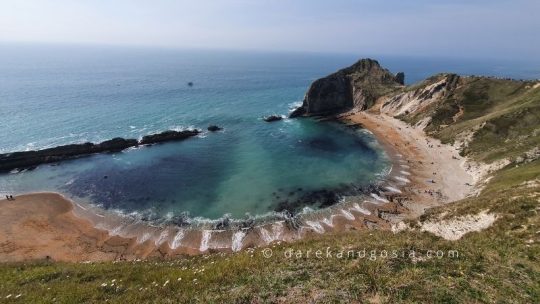Looking for hot & warm places to visit in Europe in Summer? We’ve covered the warmest places in June, July and August in Europe!
Summer in Europe often conjures up images of lounging on the beach under the warm, sunny skies. Although this can be an enjoyable holiday experience, it can also come with a higher price tag. The peak tourist season in Europe is during the summer, particularly during school holidays, making it the busiest time of the year.
Travelers seeking affordable prices, and better choices may want to consider booking hotels and car rentals several months in advance of their summer trip to Europe.
If you’re searching for suggestions on the top European weekend breaks, you’ll be glad to learn that many of them are ideal for visiting during the summer season in Europe!
European Summer break – car hire:
We have rented cars many times during summer trips in Europe and we always used discovercars.com
Check out our guide to the best European car hire company or simply explore the options directly on discovercars.com if you need a car during a summer trip in Europe.
Summer in Europe types:
| Warmest places in Europe in June: | Fuerteventura |
| Hottest place in Europe in July: | Alicante |
| Best weather in Europe in August: | Dorset |
| Hottest place in Europe in June: | Zakynthos |
| Warmest places in Europe in July: | French Riviera |
| Hottest places in Europe in August: | Tenerife |
When is summer in Europe?
Summer in Europe typically starts in June and lasts until September. However, the exact dates may vary slightly depending on the country and region within Europe. In general, June, July, and August are considered the peak summer months in Europe, with warm weather and long days of sunshine.
When does summer start in Europe exactly?
The official start of summer in Europe varies depending on the calendar used. According to the meteorological calendar, which is commonly used in Europe, summer starts on June 1st and ends on August 31st. This calendar divides the year into four seasons of three months each.
However, according to the astronomical calendar, which is based on the position of the Earth in relation to the sun, summer starts on the summer solstice, which falls between June 20th and June 22nd in the Northern Hemisphere. The astronomical calendar defines summer as the period between the summer solstice and the autumnal equinox, which falls between September 21st and September 23rd in the Northern Hemisphere.
Where is warm in Europe in summer? Here are just some of the best places to visit in Europe during the summer.
Explore the best places to visit in Summer in Europe – top ideas for holidays in June, July or August:
Where is warm in June in Europe?
So, where is hot in June in Europe? The weather in Europe in June varies depending on the region and country. However, in general, June is a great month to visit Europe as the weather is warm and sunny in many parts of the continent.
Our list of top warm places to visit in June in Europe:
1. Fuerteventura
Where is hot in Europe in June? Fuerteventura is a popular destination for summer holidays, especially for those seeking sunshine, warm weather, and beautiful beaches. Located in the Canary Islands, off the coast of Africa, Fuerteventura is known for its stunning sandy beaches, crystal-clear waters, and year-round sunshine.
The summer months in Fuerteventura (June to August) are the peak season, and the temperatures during this time typically range from the mid-20s to low 30s Celsius. The island is popular with beach-goers, surfers, and water sports enthusiasts, with plenty of opportunities for swimming, snorkeling, windsurfing, and kiteboarding.
One of the most popular beaches in Fuerteventura is Playa de Sotavento, located on the southern coast of the island. The beach is known for its long stretch of white sand and turquoise waters, and is a popular spot for windsurfing and kitesurfing.
Another popular destination is the town of Corralejo, located on the northern coast of the island. Corralejo is a lively town with a wide range of restaurants, bars, and shops, as well as a picturesque old town area. The town also offers easy access to the nearby Natural Park of the Dunes of Corralejo, a protected area of sand dunes and beaches.
For those interested in history and culture, the town of Betancuria is a must-visit destination. Betancuria was the original capital of Fuerteventura and is known for its historic buildings, including the Santa Maria Church and the Archaeological Museum.
Overall, Fuerteventura is a great destination for a summer holiday, offering plenty of sunshine, beautiful beaches, and a wide range of activities and attractions for visitors to enjoy.
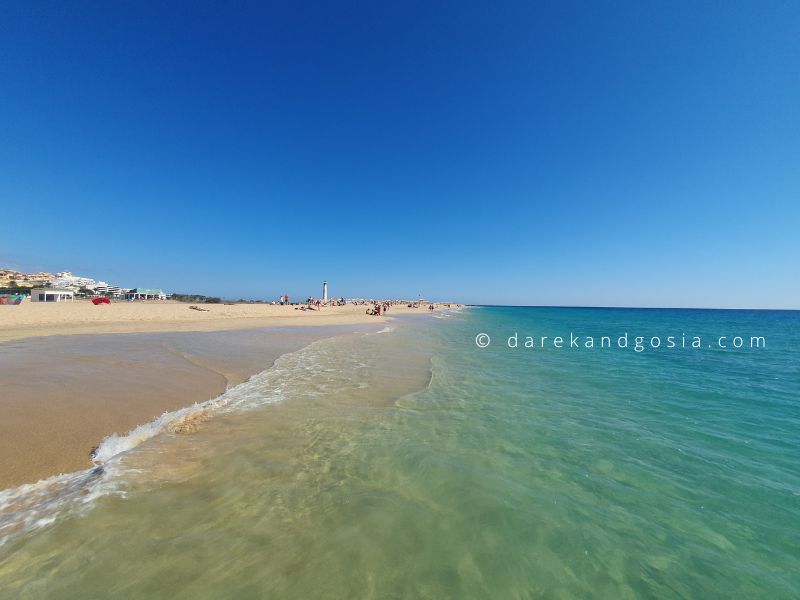
2. Kynance Cove
Where is hot in June Europe? Kynance Cove is a beautiful beach located on the Lizard Peninsula in Cornwall, England. It is a popular destination in the summer months, especially for those seeking picturesque scenery, turquoise waters, and stunning cliffs.
During the summer months (June to August), the temperatures in Kynance Cove typically range from the mid to high teens Celsius, making it a pleasant destination for outdoor activities and beach-going. The water temperature can be cool but is usually warm enough for swimming and water sports.
One of the main attractions of Kynance Cove is its natural beauty. The beach is surrounded by towering cliffs and rock formations, and the water is crystal-clear and often a vibrant turquoise color. There are also several small caves and coves to explore along the shoreline.
For those interested in hiking and outdoor activities, Kynance Cove offers a range of trails and paths that lead through the surrounding countryside and along the coast. The South West Coast Path passes through Kynance Cove, and offers stunning views of the cliffs and coastline.
There are also several cafes and restaurants located near Kynance Cove, offering a range of food and drink options for visitors. The nearby town of Lizard also offers a range of shops and amenities for those in need of supplies or souvenirs.
Kynance Cove is a beautiful and picturesque destination to visit in the summer, offering stunning scenery, clear waters, and a range of outdoor activities for visitors to enjoy.
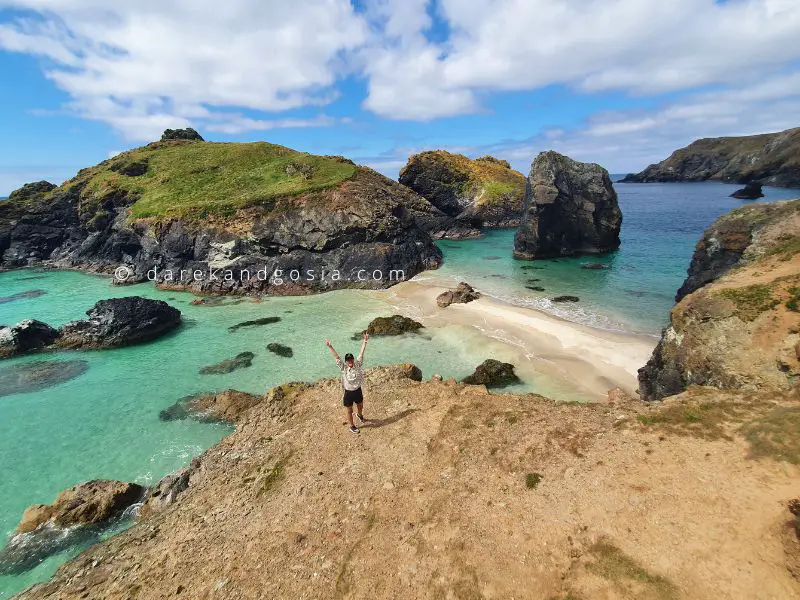
3. Verdon Gorge
Looking for hot European countries in July? Verdon Gorge is a popular destination for outdoor enthusiasts and nature lovers, located in southeastern France. It is known for its stunning natural beauty, crystal-clear waters, and impressive limestone cliffs.
During the summer months (June to August), Verdon Gorge is a popular destination for outdoor activities such as hiking, rock climbing, kayaking, and swimming. The temperatures during this time typically range from the mid to high 20s Celsius, making it a pleasant destination for outdoor adventures.
One of the main attractions of Verdon Gorge is the Verdon River, which flows through the gorge and offers opportunities for kayaking, canoeing, and swimming. The river is crystal-clear and has a bright turquoise color, making it a stunning sight to behold. There are also several beaches and swimming areas along the river, offering a place to relax and enjoy the scenery.
For those interested in hiking and rock climbing, Verdon Gorge offers a range of trails and routes through the surrounding cliffs and mountains. The gorge is home to several climbing areas, including the famous “Grand Canyon” du Verdon, which offers challenging routes for experienced climbers.
There are also several small towns and villages located near Verdon Gorge, offering a range of accommodations, restaurants, and amenities for visitors. The town of Moustiers-Sainte-Marie, located near the entrance to the gorge, is known for its pottery and offers a range of shops and galleries to explore.
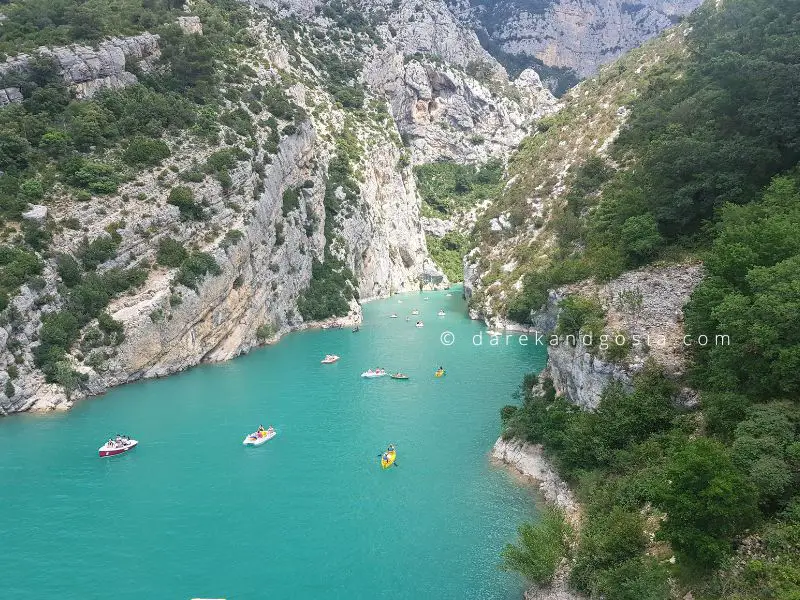
4. Lisbon
Where in Europe is hot in June? June is a great time to visit Lisbon, Portugal’s vibrant capital city. During this month, the weather is warm and sunny, but not too hot, making it an ideal time to explore the city’s sights and attractions.
One of the main attractions of Lisbon is its rich history and culture. The city is known for its stunning architecture, including the famous Belem Tower, the Jeronimos Monastery, and the Castle of Sao Jorge. These iconic landmarks offer a glimpse into the city’s past and are a must-visit for history and architecture enthusiasts.
June is also a great time to explore Lisbon’s vibrant neighborhoods, including Alfama, Bairro Alto, and Chiado. These areas are known for their lively atmosphere, colorful buildings, and narrow cobblestone streets. They are also home to a wide range of restaurants, bars, and cafes, offering a taste of Portugal’s famous cuisine and wine.
Another popular attraction in Lisbon is the city’s coastline. June is an ideal time to visit Lisbon’s beaches, including the popular Cascais and Estoril, which are located just a short train ride from the city center. These beaches offer a range of activities, including swimming, sunbathing, and surfing.
For those interested in culture and entertainment, Lisbon offers a range of festivals and events during the month of June. One of the most popular events is the Lisbon Festivities, which take place throughout the month and feature music, dance, and street parties. The Saint Anthony Day, on June 13th, is also a big celebration in Lisbon, with parades and traditional food stalls throughout the city.
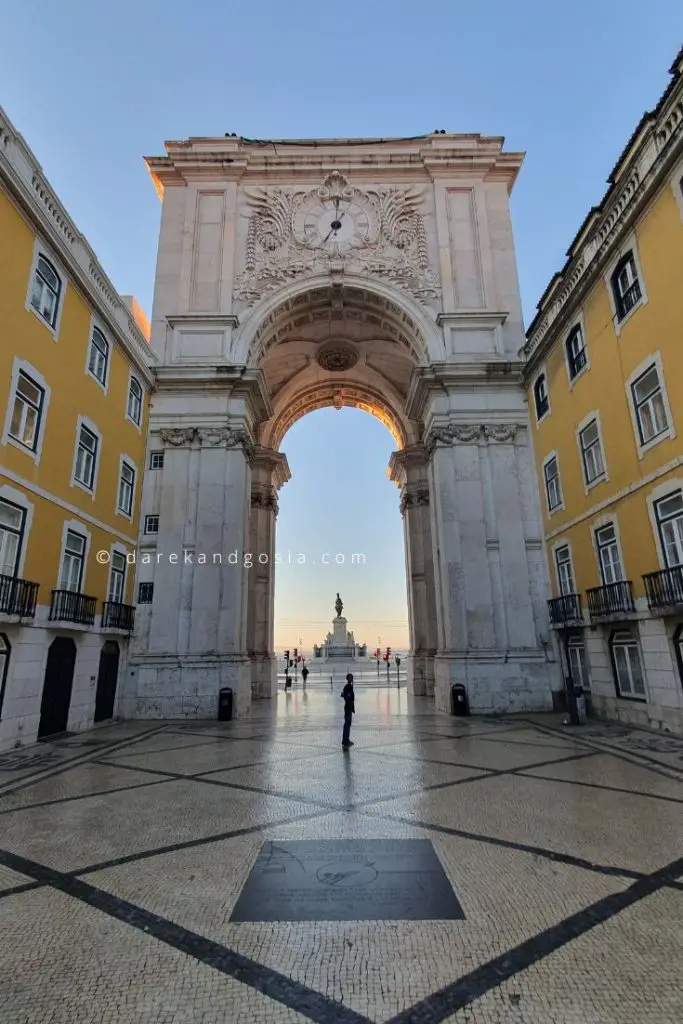
5. Cinque Terre
Best places to visit in June in Europe? June is a popular time to visit Cinque Terre, a beautiful and colorful coastal area in the Liguria region of Italy. During this month, the weather is warm and sunny, making it an ideal time to explore the area’s stunning landscapes and picturesque towns.
One of the main attractions of Cinque Terre is its stunning coastline, which consists of five small towns: Monterosso al Mare, Vernazza, Corniglia, Manarola, and Riomaggiore. Each of these towns has its own unique charm and character, with colorful houses, narrow streets, and stunning views of the sea.
June is an ideal time to explore the towns of Cinque Terre, as the weather is warm enough for swimming and sunbathing, but not too hot for hiking or exploring. The area is known for its hiking trails, which offer stunning views of the coastline and surrounding countryside. The most famous trail is the Sentiero Azzurro, or Blue Trail, which connects all five towns and offers stunning views of the sea and the surrounding cliffs.
In addition to hiking and exploring the towns, June is also a great time to enjoy the local food and wine of the region. Cinque Terre is known for its fresh seafood, pesto sauce, and local wines, which can be enjoyed in the many restaurants and cafes in the area.
June is also a great time to attend one of the many festivals and events in Cinque Terre. One of the most popular is the San Giovanni Battista festival, which takes place on June 24th and features fireworks, music, and a procession through the town.
6. Zákynthos
Looking for hot places in Europe in June? Zakynthos, also known as Zante, is a popular Greek island destination in the Ionian Sea, and it is especially beautiful during the summer months. With its clear blue waters, pristine beaches, and stunning landscapes, Zakynthos offers plenty of activities and attractions for visitors during the summer season.
One of the most popular activities on Zakynthos during the summer months is visiting the island’s beautiful beaches. The island is home to a number of stunning beaches, including Navagio (Shipwreck) Beach, which is famous for its crystal-clear waters and the wreck of a smuggler’s ship that lies on its shore. Other popular beaches on the island include Gerakas, Banana Beach, and Laganas Beach, which is a popular destination for water sports.
In addition to its beautiful beaches, Zakynthos is also known for its picturesque villages and stunning landscapes. Visitors can explore the island’s many traditional villages, such as Keri and Agios Leon, which offer a glimpse into the island’s rich culture and history. The island’s stunning landscapes can be explored by hiking through the lush green hills, olive groves, and vineyards.
Another popular attraction on Zakynthos during the summer months is the island’s nightlife. The island is home to a number of bars, nightclubs, and beach parties, particularly in the popular resort areas of Laganas and Tsilivi.
Finally, visitors to Zakynthos during the summer months can also enjoy a variety of water sports, including snorkeling, scuba diving, and jet skiing. The island’s clear blue waters offer the perfect conditions for these activities, making it a popular destination for water sports enthusiasts.
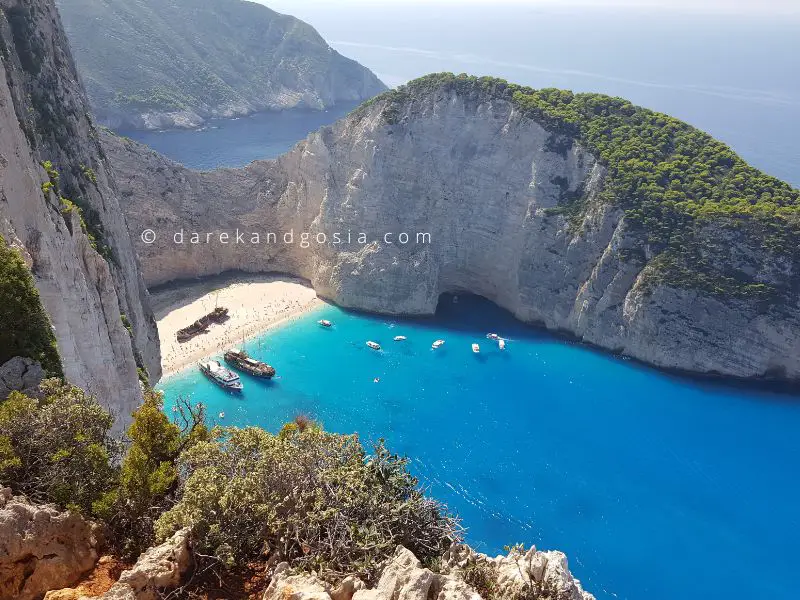
7. Venice
Warm weather in June in Europe? June is a popular time to visit Venice, Italy, as the weather is warm and sunny, making it ideal for exploring the city’s many attractions and landmarks. With its beautiful canals, historic architecture, and rich cultural heritage, Venice offers visitors a unique and unforgettable experience.
One of the main attractions of Venice is its beautiful canals, and one of the best ways to explore the city is by taking a gondola ride. During the summer months, these rides can be particularly enjoyable, as the weather is warm and the canals are bustling with activity. Visitors can also explore the city’s many bridges, such as the iconic Rialto Bridge, and enjoy stunning views of the canals and surrounding architecture.
June is also a great time to explore Venice’s historic landmarks and cultural attractions. The city is home to a number of stunning churches, including St. Mark’s Basilica and the Basilica di Santa Maria Gloriosa dei Frari, as well as many museums and art galleries, such as the Peggy Guggenheim Collection and the Gallerie dell’Accademia. Visitors can also explore the historic palaces and buildings that line the canals, such as the Palazzo Ducale and the Ca’ d’Oro.
In addition to its cultural attractions, Venice is also known for its delicious food and wine. Visitors can enjoy traditional Venetian dishes, such as seafood risotto and polenta, as well as local wines and aperitifs, such as Aperol spritz and Bellini cocktails.
Finally, June is also a great time to enjoy some of the city’s many festivals and events. One of the most popular is the Festa della Sensa, which takes place in early June and celebrates Venice’s maritime heritage with a boat procession and other events.
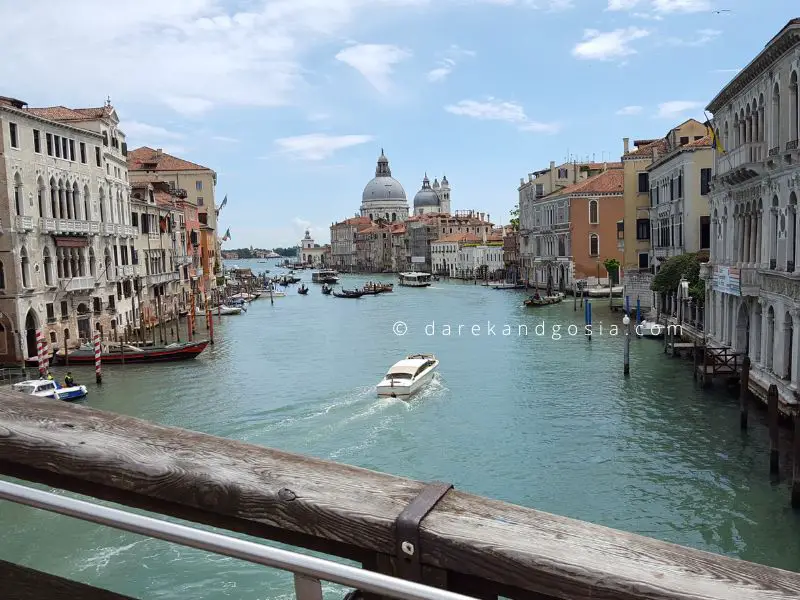
8. Malta
Where to go for hot places in June Europe? Malta is a popular summer destination located in the Mediterranean Sea, known for its crystal-clear waters, sandy beaches, and historic architecture. With its warm and sunny weather, Malta is the perfect place to enjoy a variety of outdoor activities and explore the island’s many attractions.
One of the main attractions of Malta during the summer months is its beautiful beaches. The island is home to a number of stunning beaches, including Golden Bay, Mellieha Bay, and St. George’s Bay, which offer a range of water sports activities, such as swimming, snorkeling, and jet skiing.
In addition to its beaches, Malta is also known for its rich history and cultural heritage. Visitors can explore the island’s many historic sites and landmarks, such as the Megalithic Temples of Malta, the Hal Saflieni Hypogeum, and the capital city of Valletta, which is a UNESCO World Heritage Site.
Malta is also home to vibrant nightlife, particularly in the popular resort areas of St. Julian’s and Paceville. Visitors can enjoy a variety of bars, nightclubs, and restaurants, as well as attending music festivals and other events.
For those looking for outdoor activities, Malta offers a range of options, including hiking and cycling through the island’s scenic countryside, diving in its clear waters to explore its underwater caves and shipwrecks, and sailing to explore the island from a different perspective.
Malta is known for its delicious cuisine, which features a blend of Mediterranean and North African influences. Visitors can enjoy traditional Maltese dishes, such as rabbit stew and pastizzi, as well as fresh seafood and local wines.
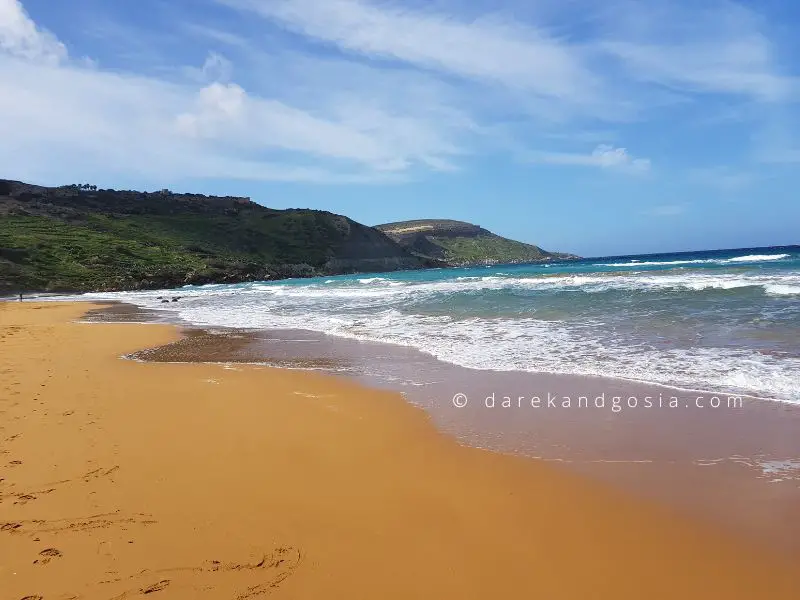
9. Crete
Where is warm in Europe in June? Crete is the largest of the Greek islands, located in the eastern Mediterranean Sea. June is a great time to visit Crete, as the weather is warm and sunny, making it perfect for exploring the island’s many attractions and beautiful scenery.
One of the main attractions of Crete in June is its beautiful beaches. The island is home to a number of stunning beaches, including Elafonisi, Falassarna, and Balos, which offer a range of water sports activities, such as swimming, snorkeling, and surfing. The clear, turquoise waters of the Aegean Sea make for an inviting and refreshing swimming experience.
In addition to its beaches, Crete is also known for its rich history and culture. Visitors can explore the island’s many ancient sites and landmarks, such as the Palace of Knossos, the Heraklion Archaeological Museum, and the ancient city of Aptera. The island also boasts charming traditional villages and towns, such as Chania and Rethymno, where visitors can experience local customs and traditions.
Crete is also home to a range of outdoor activities, such as hiking and cycling in the island’s scenic countryside, exploring the Samaria Gorge, and diving in its clear waters to explore its underwater caves and shipwrecks. Visitors can also take boat trips to explore the island’s stunning coastline and hidden coves.
For those interested in food and drink, Crete offers a range of delicious local cuisine, such as grilled meats, fresh seafood, and traditional cheeses and breads. Visitors can enjoy dining in traditional tavernas and trying local wines and spirits, such as raki and ouzo.
10. Sardinia
Hot places to go in June in Europe? Sardinia is an Italian island located in the Mediterranean Sea, known for its stunning beaches, crystal-clear waters, and rugged landscapes. June is a great time to visit Sardinia, as the weather is warm and sunny, making it perfect for exploring the island’s many attractions and beautiful scenery.
One of the main attractions of Sardinia in June is its beautiful beaches. The island is home to a number of stunning beaches, including Costa Smeralda, La Maddalena, and Cala Goloritze, which offer a range of water sports activities, such as swimming, snorkeling, and sailing. The clear, turquoise waters of the Mediterranean Sea make for an inviting and refreshing swimming experience.
In addition to its beaches, Sardinia is also known for its rich history and culture. Visitors can explore the island’s many ancient sites and landmarks, such as the Nuraghe Su Nuraxi, the Santuario di Nostra Signora di Bonaria, and the historic city of Alghero. The island also boasts charming traditional villages and towns, such as Castelsardo and Bosa, where visitors can experience local customs and traditions.
Sardinia is also home to a range of outdoor activities, such as hiking and cycling in the island’s scenic countryside, exploring the rugged landscapes of the Gennargentu Mountains, and diving in its clear waters to explore its underwater caves and shipwrecks. Visitors can also take boat trips to explore the island’s stunning coastline and hidden coves.
For those interested in food and drink, Sardinia offers a range of delicious local cuisine, such as roasted suckling pig, fresh seafood, and traditional cheeses and breads. Visitors can enjoy dining in traditional trattorias and trying local wines and spirits, such as Cannonau and Mirto.
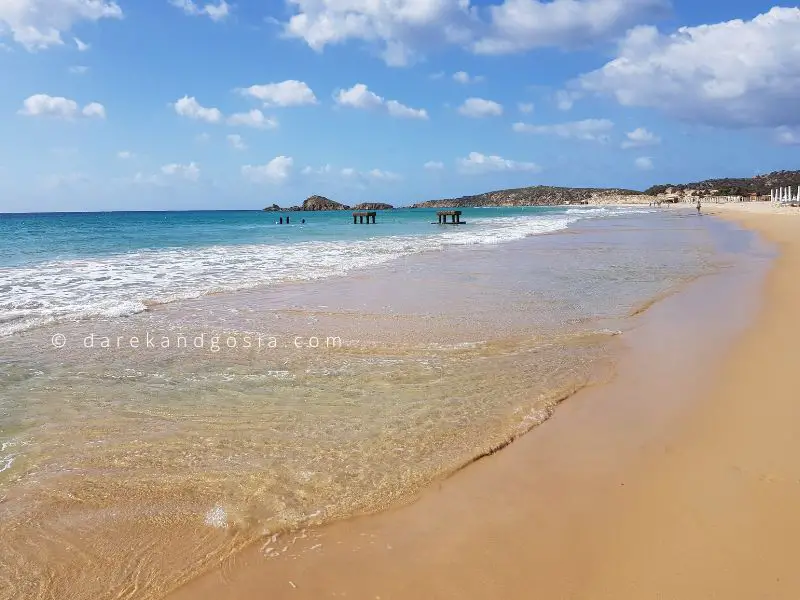
Where is warm in July in Europe?
July is generally a sunny and hot month in much of Europe, especially in southern and Mediterranean countries. However, the weather can vary depending on the region and country, and it is always a good idea to check the specific weather conditions of the destinations you plan to visit.
In general, southern European countries such as Spain, Italy, Greece, and Portugal tend to have hot and sunny weather in July, with high temperatures and plenty of sunshine. However, some parts of these countries, especially inland areas, can experience high humidity, so it is important to be prepared for the heat.
Northern European countries such as the UK, Ireland, and the Scandinavian countries tend to have milder temperatures in July, with some rain and occasional heatwaves. Nevertheless, there can still be plenty of sunny days, and the long daylight hours make it a great time to explore the outdoors and enjoy the summer festivals and events that take place throughout Europe.
Our list of top warm places to visit in July in Europe:
11. North Devon
Best places to visit in July in Europe? North Devon is a beautiful coastal area in the southwest of England, known for its rugged coastline, sandy beaches, and picturesque villages. July is a great time to visit North Devon, as the weather is warm and sunny, making it perfect for exploring the area’s many attractions and enjoying the outdoors.
One of the main attractions of North Devon in July is its beautiful beaches. The area is home to a number of stunning beaches, such as Saunton Sands, Woolacombe, and Croyde, which offer a range of water sports activities, such as surfing, paddleboarding, and kayaking. The clear waters of the Atlantic Ocean make for an inviting and refreshing swimming experience.
In addition to its beaches, North Devon is also known for its charming coastal villages and towns, such as Appledore, Clovelly, and Ilfracombe, where visitors can explore local shops, galleries, and restaurants. The area is also home to a number of historic landmarks, such as the National Trust’s Arlington Court, and the Tarka Trail, a 180-mile walking and cycling route that runs through the area’s beautiful countryside.
North Devon is also home to a range of outdoor activities, such as hiking and cycling in the scenic Exmoor National Park, horse riding on the beach, and fishing in its rivers and lakes. Visitors can also take boat trips to explore the coastline and spot wildlife, such as seals and dolphins.
For those interested in food and drink, North Devon offers a range of delicious local cuisine, such as freshly caught seafood, traditional cream teas, and local ales and ciders. Visitors can enjoy dining in traditional pubs and restaurants and exploring local food markets and festivals.
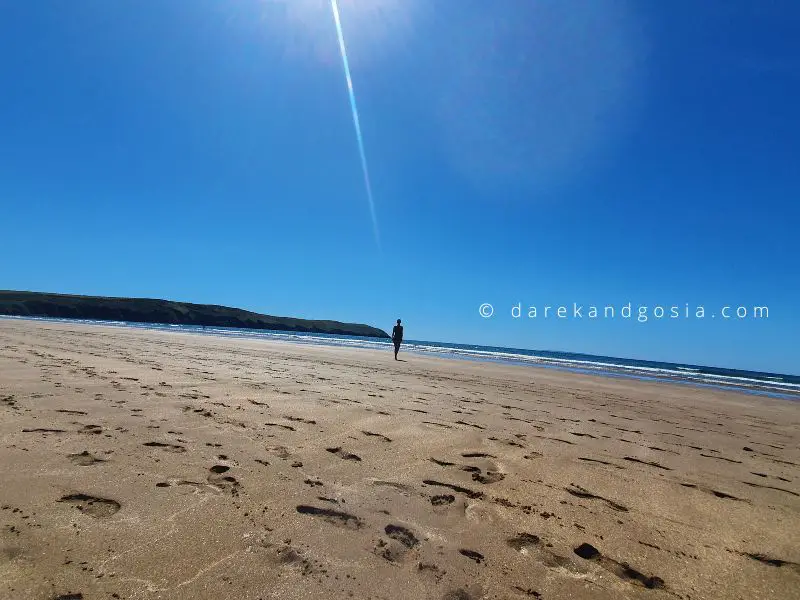
12. Lanzarote
Where is hot in Europe in July? Lanzarote is a beautiful volcanic island located in the Canary Islands, off the coast of Africa. July is a great time to visit Lanzarote, as the weather is warm and sunny, making it perfect for enjoying the island’s many outdoor activities and attractions.
One of the main attractions of Lanzarote in July is its beautiful beaches. The island is home to a number of stunning beaches, such as Playa Blanca, Famara, and Papagayo, which offer a range of water sports activities, such as surfing, windsurfing, and diving. The clear, turquoise waters of the Atlantic Ocean make for an inviting and refreshing swimming experience.
In addition to its beaches, Lanzarote is also known for its unique volcanic landscapes and natural attractions, such as the Timanfaya National Park, the Jameos del Agua caves, and the Cueva de los Verdes lava tubes. Visitors can explore these attractions by taking guided tours, hiking, or cycling.
Lanzarote is also home to a range of outdoor activities, such as hiking and cycling in the island’s scenic countryside, exploring the island’s volcanic landscapes, and taking boat trips to explore the coastline and spot wildlife, such as dolphins and whales.
For those interested in culture, Lanzarote offers a range of museums and art galleries, such as the Cesar Manrique Foundation and the Museum of International and Contemporary Art. Visitors can also explore the island’s traditional villages and towns, such as Teguise and Haria, where they can experience local customs and traditions.

13. The Cotswolds
Where is warm in July Europe? The Cotswolds is a beautiful region located in the heart of England, known for its picturesque countryside, charming villages, and historic landmarks. July is a great time to visit the Cotswolds, as the weather is warm and sunny, making it perfect for exploring the area’s many attractions and enjoying the outdoors.
One of the main attractions of the Cotswolds in July is its beautiful countryside. The area is home to a number of stunning landscapes, such as rolling hills, lush green fields, and tranquil rivers, which offer a range of outdoor activities, such as hiking, cycling, and horse riding. Visitors can also explore the area’s nature reserves, such as the Cotswold Water Park, and spot wildlife, such as otters and rare birds.
In addition to its countryside, the Cotswolds is also known for its charming villages and towns, such as Bourton-on-the-Water, Chipping Campden, and Stow-on-the-Wold, where visitors can explore local shops, galleries, and restaurants. The area is also home to a number of historic landmarks, such as the medieval Warwick Castle, the ancient Roman city of Bath, and the picturesque Blenheim Palace.
The Cotswolds is also home to a range of cultural events and festivals in July, such as the Cotswold Show and Food Festival, the Cheltenham Music Festival, and the Gloucester Tall Ships Festival. Visitors can also enjoy local cuisine, such as traditional cream teas, locally produced cheeses, and locally brewed ales.
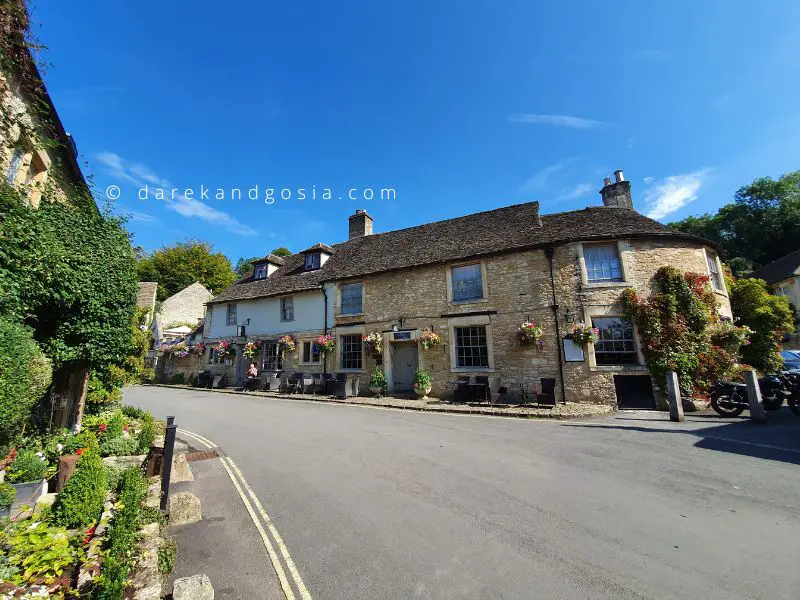
14. Alicante
Where’s hot in July in Europe? Alicante is a beautiful city located on the southeastern coast of Spain, known for its sandy beaches, historic landmarks, and vibrant nightlife. July is a great time to visit Alicante, as the weather is warm and sunny, making it perfect for enjoying the city’s many attractions and outdoor activities.
One of the main attractions of Alicante in July is its beautiful beaches. The city is home to a number of stunning beaches, such as San Juan Beach, Postiguet Beach, and Albufereta Beach, which offer a range of water sports activities, such as windsurfing, sailing, and paddleboarding. The clear, turquoise waters of the Mediterranean Sea make for an inviting and refreshing swimming experience.
In addition to its beaches, Alicante is also known for its historic landmarks, such as the Castle of Santa Barbara, the Cathedral of Saint Nicholas, and the Basilica of Santa Maria. Visitors can explore these landmarks by taking guided tours, or by strolling through the narrow streets of the city’s Old Town, where they can experience local customs and traditions.
Alicante is also home to a range of outdoor activities, such as hiking in the nearby mountains, cycling along the coastal paths, and taking boat trips to explore the coastline and spot wildlife, such as dolphins and sea turtles.
For those interested in culture, Alicante offers a range of museums and art galleries, such as the Archaeological Museum of Alicante and the Museum of Contemporary Art. Visitors can also enjoy local cuisine, such as paella, tapas, and seafood, at the many restaurants and bars that line the city’s streets.
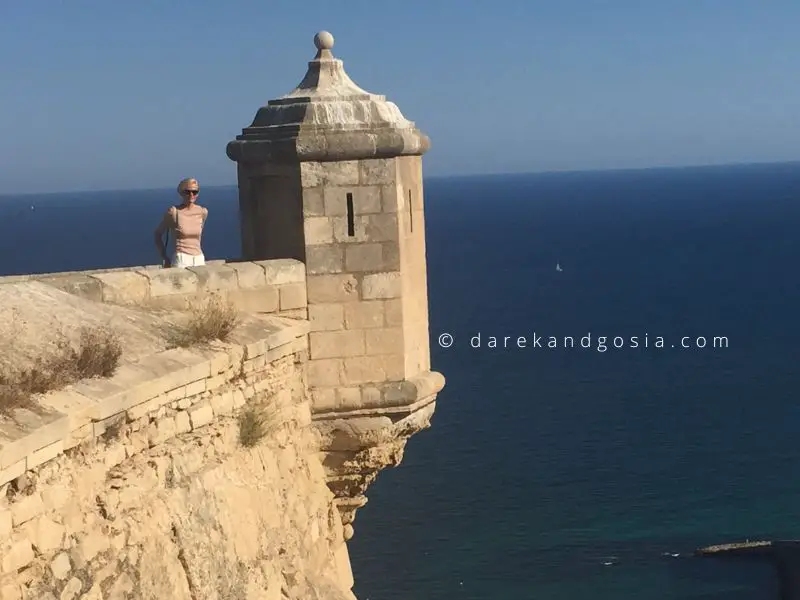
15. Iceland
Warm places in Europe in July? July is a great time to visit Iceland as it’s the peak of summer and the weather is mild (or warm-ish for Iceland standards 😉 ), making it an ideal time to explore the country’s many natural wonders and outdoor activities. Here are some things to do in Iceland in July:
- Explore the stunning landscapes: Iceland is known for its breathtaking landscapes, including glaciers, waterfalls, hot springs, and volcanoes. Popular attractions include the Blue Lagoon, the Golden Circle, and Jökulsárlón glacier lagoon.
- Go whale watching: July is one of the best months for whale watching in Iceland, as it’s the peak season for migrating whales, including humpback whales, orcas, and minke whales.
- Attend a festival: Iceland hosts a number of festivals in July, including the Secret Solstice music festival, the Reykjavik Jazz Festival, and the Viking Festival in Hafnarfjörður.
- Take a hike: Iceland is a hiker’s paradise, and July is a great time to explore the country’s many hiking trails, including the Laugavegur Trail and the Fimmvörðuháls Trail.
- Visit a national park: Iceland has three national parks, including Thingvellir National Park, Vatnajökull National Park, and Snæfellsjökull National Park, all of which offer incredible views and outdoor activities.
- Go horseback riding: Icelandic horses are known for their unique gait and friendly personalities, and horseback riding is a popular activity in Iceland.
- Experience the midnight sun: In July, the sun sets for only a few hours each night, and in some parts of the country, it never sets at all. This creates a unique experience known as the midnight sun, which is a must-see in Iceland.
Overall, Iceland in July offers visitors a range of activities and attractions, from exploring its stunning landscapes and wildlife to attending festivals and experiencing the midnight sun.

16. Gran Canaria
Where in Europe is hot in July? Gran Canaria is a great destination for summer vacations due to its warm climate, beautiful beaches, and numerous attractions. The temperature in the summer months (June to August) averages around 25-30°C (77-86°F) with little rainfall.
Here are some things you can do in Gran Canaria during the summer:
- Hit the beaches: Gran Canaria is famous for its gorgeous beaches, and there are plenty to choose from. Some popular ones include Playa de las Canteras, Maspalomas Beach, and Puerto Rico Beach.
- Water sports: With its clear waters and favorable winds, Gran Canaria is an excellent spot for water sports like surfing, windsurfing, and kitesurfing. You can also try your hand at kayaking, jet-skiing, or parasailing.
- Hiking: Gran Canaria is also known for its rugged mountainous terrain, which offers fantastic hiking opportunities. The island is home to several hiking trails that range in difficulty from easy walks to challenging treks.
- Visit the dunes of Maspalomas: The sand dunes of Maspalomas are a unique natural wonder and one of the most popular tourist attractions on the island. You can take a camel ride or simply explore the dunes on foot.
- Explore the capital: Las Palmas de Gran Canaria is the island’s capital and a vibrant city with plenty to see and do. Visit the historic Vegueta district, explore the museums and art galleries, or enjoy some shopping and dining.
- Enjoy the nightlife: Gran Canaria is famous for its lively nightlife, particularly in the popular resort areas like Playa del Inglés and Maspalomas. You can dance the night away at one of the many clubs or enjoy a drink at a beachfront bar.
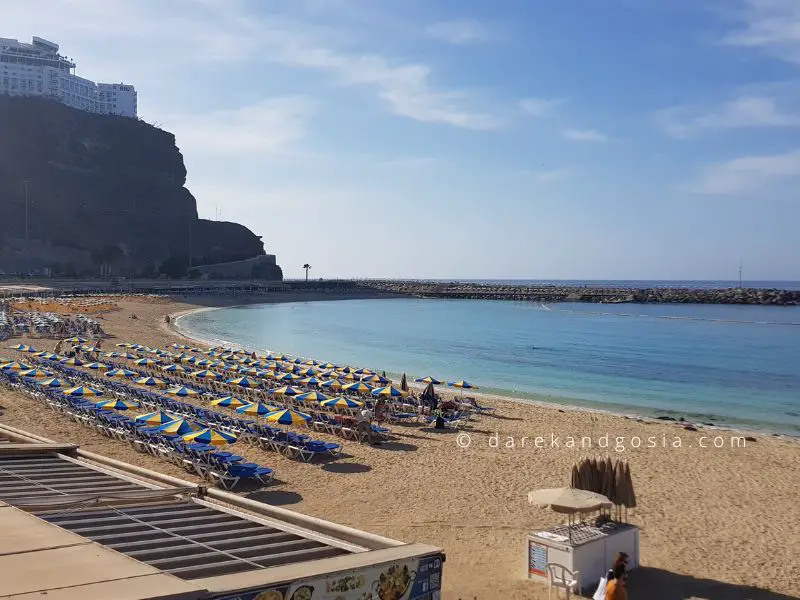
17. Copenhagen
Warm places to visit in July in Europe? Copenhagen is a beautiful city that is especially enjoyable to visit during the summer months (June-August) when the weather is pleasant and the days are long. Here are some things you can do in Copenhagen during the summer:
- Visit Tivoli Gardens: Tivoli Gardens is a historic amusement park located in the heart of Copenhagen. During the summer months, the park is open late and offers a variety of rides, games, and attractions, as well as concerts and other special events.
- Explore the canals: Copenhagen is sometimes called the “Venice of the North” because of its beautiful canals. You can take a boat tour of the canals, rent a kayak or paddleboard, or simply stroll along the waterfront.
- Relax in the parks: Copenhagen has many beautiful parks and green spaces, including the famous King’s Garden (Kongens Have) and Frederiksberg Gardens. You can enjoy a picnic, play some frisbee, or simply soak up the sun.
- Visit the beaches: Copenhagen has several beaches within easy reach of the city center. Amager Strandpark is the most popular, with its long stretch of white sand, swimming areas, and beach bars.
- Bike around the city: Copenhagen is a bike-friendly city, with plenty of bike lanes and rental options. Rent a bike and explore the city on two wheels, or join a guided bike tour to learn more about the city’s history and culture.
- Enjoy the food and drink: Copenhagen is famous for its food scene, with many excellent restaurants and cafes. During the summer, you can enjoy outdoor dining and drinks at the many street-side cafes and bars.
18. French Riviera
Where is warm in Europe in July? July is a popular time to visit the French Riviera as it is peak season for tourists. The French Riviera, also known as the Côte d’Azur, is a beautiful coastal region in the southeast of France that is famous for its stunning beaches, luxury resorts, and glamorous lifestyle.
In July, the weather is generally warm and sunny, with temperatures ranging from 20°C to 30°C (68°F to 86°F). The sea is also warm and perfect for swimming, which makes it a great time to enjoy the beaches and water sports.
There are many events and activities taking place in July on the French Riviera, such as the Cannes Fireworks Festival, the Nice Jazz Festival, and the International Festival of Pyrotechnic Art in Monaco. There are also many cultural and historical sites to visit, such as the Palace of Versailles, the Louvre Museum in Paris, and the medieval village of Eze.
However, keep in mind that July is the busiest time of the year on the French Riviera, which means that prices are generally higher, and there will be more crowds and traffic. It is recommended to book accommodation and activities well in advance to avoid disappointment.
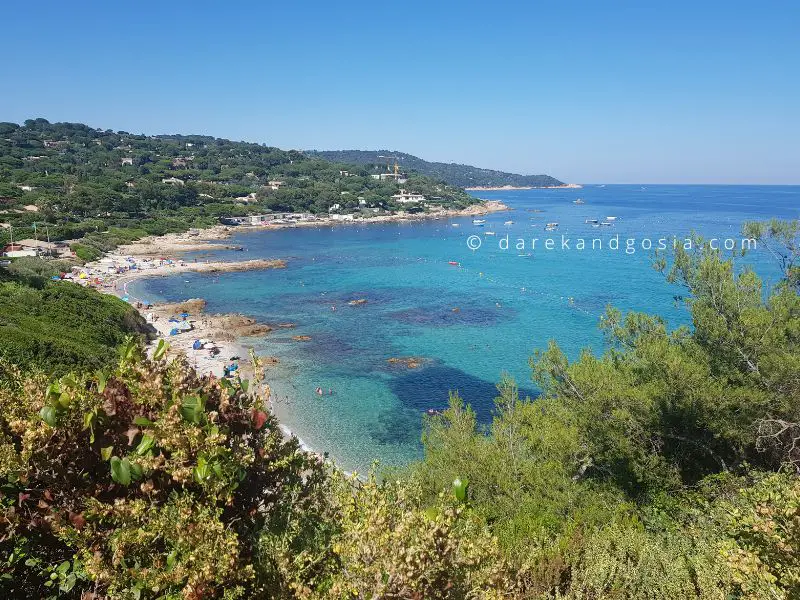
19. Amalfi Coast
Where is it hot in July in Europe? The Amalfi Coast is a beautiful coastal area in southern Italy, known for its picturesque towns, colorful houses, and stunning views of the Mediterranean Sea. July is a popular time to visit the Amalfi Coast, as it is peak season for tourists.
In July, the weather in the Amalfi Coast is generally warm and sunny, with temperatures ranging from 25°C to 30°C (77°F to 86°F). The sea is also warm and perfect for swimming, making it an ideal time to enjoy the beaches and water activities.
There are many things to see and do in the Amalfi Coast in July, such as visiting the towns of Amalfi, Positano, and Ravello, exploring the beautiful gardens of Villa Rufolo, and hiking the scenic trails along the coastline. You can also take a boat trip to the nearby islands of Capri or Ischia.
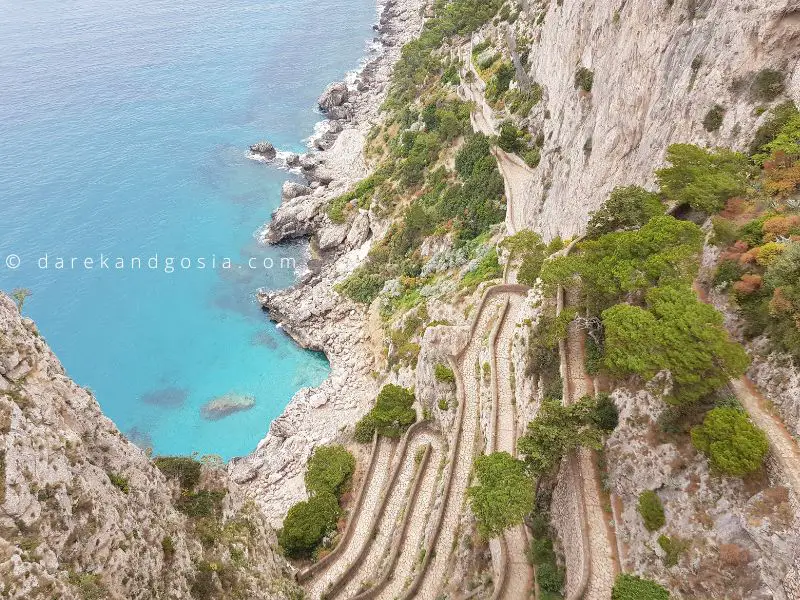
20. Majorca
Where is it hot in Europe in July? Majorca, also known as Mallorca, is a beautiful island located in the Mediterranean Sea, off the eastern coast of Spain. July is a popular time to visit Majorca, as it is peak season for tourists.
In July, the weather in Majorca is generally warm and sunny, with temperatures ranging from 25°C to 30°C (77°F to 86°F). The sea is also warm and perfect for swimming, making it an ideal time to enjoy the island’s beaches and water activities.
There are many things to see and do in Majorca in July, such as visiting the historic city of Palma, exploring the island’s beautiful beaches, and hiking in the Serra de Tramuntana mountain range. You can also visit the island’s many cultural attractions, such as the Bellver Castle, the Cathedral of Santa Maria of Palma, and the Palma Aquarium.
Where is warm in August in Europe?
Late August marks the end of summer in Europe, but it is still a great time to soak up some sun before autumn arrives. While the weather may be starting to cool down in some regions, most holiday destinations continue to enjoy warm temperatures, and the sea remains pleasantly warm. Despite the occasional chance of overcast skies, August remains a popular month for tourists to explore some of Europe’s most beloved locations.
Our list of the best warm places to visit in August in Europe:
21. Tenerife
Best warm places in Europe in August? Tenerife is a beautiful island located in the Canary Islands, off the western coast of Africa, and is a popular destination for tourists. August is a popular time to visit Tenerife, as it is the peak of the summer season.
In August, the weather in Tenerife is generally warm and sunny, with temperatures ranging from 25°C to 30°C (77°F to 86°F). The sea is also warm and perfect for swimming, making it an ideal time to enjoy the island’s beaches and water activities.
There are many things to see and do in Tenerife in August, such as visiting the Teide National Park, exploring the island’s beautiful beaches, and taking a boat trip to see the whales and dolphins. You can also visit the island’s many cultural attractions, such as the Museum of Nature and Man, the Auditorio de Tenerife, and the historic town of La Laguna.
22. St Ives
Best places to visit in August in Europe? St Ives is a charming seaside town located in Cornwall, England, and is a popular destination for tourists during the summer months, including August.
In August, the weather in St Ives is generally mild and pleasant, with temperatures ranging from 15°C to 20°C (59°F to 68°F), although it can be cooler and wetter than other destinations mentioned. The sea is also relatively warm and perfect for swimming, making it an ideal time to enjoy the town’s beaches and water activities.
There are many things to see and do in St Ives in August, such as visiting the Tate St Ives, exploring the town’s charming cobbled streets and alleys, and hiking along the scenic coastal path. You can also take a boat trip to see the seals and dolphins, or enjoy a surf lesson at one of the town’s surf schools.
23. Catedrais Beach
Where is warm in Europe in August? Catedrais Beach, also known as Playa de las Catedrales, is a stunning beach located in Galicia, Spain. It is a popular destination for tourists during the summer months, including August.
In August, the weather in Catedrais Beach is generally warm and sunny, with temperatures ranging from 20°C to 25°C (68°F to 77°F). The sea is also relatively warm and perfect for swimming, making it an ideal time to enjoy the beach’s natural beauty.
There are many things to see in Catedrais Beach in August, such as exploring the beach’s natural arches and caves and taking a walk along the coastal path. You can also enjoy a picnic on the beach, or take a boat trip to see the beach from the sea.
24. Barcelona
Best hot places in Europe August? Barcelona is a vibrant city located in northeastern Spain, and it is a popular city break destination for tourists all year round, including August.
In August, the weather in Barcelona is generally hot and sunny, with temperatures ranging from 25°C to 30°C (77°F to 86°F). The city has a lot to offer, such as beautiful architecture, museums, parks, and beaches, which makes it an ideal place to explore during the summer.
Some of the top attractions to visit in Barcelona in August include the Sagrada Familia, Park Guell, the Gothic Quarter, and La Rambla. You can also visit the city’s many museums, such as the Picasso Museum, the Joan Miro Foundation, or the National Art Museum of Catalonia.
Additionally, Barcelona has some beautiful beaches, including Barceloneta Beach, which is very popular among tourists during the summer months. You can enjoy swimming, sunbathing, or trying some of the local seafood dishes at the beachfront restaurants.
25. Hel
Looking for hot places in Europe in August? Hel is a beautiful town located on the Hel Peninsula in northern Poland, and it is a popular destination for tourists during the summer months, including August.
In August, the weather in Hel is generally warm and sunny, with temperatures ranging from 20°C to 25°C (68°F to 77°F). The town has a lot to offer, such as beautiful beaches, historic lighthouses, and delicious seafood restaurants, which makes it an ideal place to visit during the summer.
Some of the top attractions to visit in Hel in August include the Hel Lighthouse, the Fishing Museum, and the Seal Sanctuary. You can also enjoy swimming, sunbathing, or water sports at the town’s beautiful beaches, such as Chałupy Beach or Jurata Beach.
Additionally, Hel is surrounded by the beautiful natural scenery of the Hel Peninsula, which is home to many hiking and cycling trails that offer stunning views of the Baltic Sea.
26. Malaga
Hot places in August in Europe? Malaga is a popular city located in southern Spain, and it is a great Spanish destination for tourists during the summer months, including August.
In August, the weather in Malaga is generally hot and sunny, with temperatures ranging from 25°C to 30°C (77°F to 86°F). The city has a lot to offer, such as historic landmarks, museums, parks, and beautiful beaches, which makes it an ideal place to visit during the summer.
Some of the top attractions to visit in Malaga in August include the Alcazaba, the Roman Theatre, the Picasso Museum, and the Cathedral of Malaga. You can also enjoy a stroll through the city’s historic center, or take a walk in one of the city’s many parks, such as the Parque de Malaga.
Additionally, Malaga has some beautiful beaches, including Malagueta Beach and Playa del Palo, which are very popular among tourists during the summer months. You can enjoy swimming, sunbathing, or trying some of the local seafood dishes at the beachfront restaurants.
27. Dorset
Looking for warm places to go in August in Europe? Dorset is a county located on the south coast of England, and it is a great destination for tourists during the summer months, including August.
In August, the weather in Dorset is generally warm and sunny, with temperatures ranging from 18°C to 22°C (64°F to 72°F). The county has a lot to offer, such as beautiful beaches, historic landmarks, and scenic countryside, which makes it an ideal place in the UK to visit during the summer.
Some of the top attractions to visit in Dorset in August include the Jurassic Coast, which is a UNESCO World Heritage site, and the historic Corfe Castle. You can also enjoy a walk along the South West Coast Path, which offers stunning views of the coastline, or explore the county’s many charming villages, such as Lyme Regis and Studland.
Additionally, Dorset has some beautiful beaches, including the famous Durdle Door, which is a natural limestone arch on the Jurassic Coast, and Weymouth Beach, which is a popular family-friendly beach. You can enjoy swimming, sunbathing, or trying some of the local seafood dishes at the beachfront restaurants.
28. Madeira
Hot places to go in August in Europe? Madeira is a beautiful island located off the coast of Portugal, and it is a great destination for tourists during the summer months, including August.
In August, the weather in Madeira is generally warm and sunny, with temperatures ranging from 23°C to 27°C (73°F to 81°F). The island has a lot to offer, such as stunning natural scenery, historic landmarks, and delicious cuisine, which makes it an ideal place to visit during the summer.
Some of the top attractions to visit in Madeira in August include the Levada walks, which are walking trails that follow the irrigation canals and offer stunning views of the island’s lush landscapes. You can also visit the historic town of Funchal, which has many museums, shops, and restaurants to explore.
August is a time of celebration in Madeira, with many festivals and events taking place throughout the month. The most famous of these is the Funchal Wine Festival, which celebrates the island’s wine heritage with music, dance, and wine tasting events.
29. Belgian Coast
Where is warm in August Europe? The Belgian Coast in August is a popular destination for tourists, as the weather is generally warm and sunny, making it a great time to enjoy the beach and the various outdoor activities on offer. Some of the things you can do at the Belgian Coast in August include:
- Beach activities: The Belgian Coast has a long stretch of sandy beaches where you can sunbathe, swim, or engage in various beach activities such as beach volleyball, kite flying, and building sandcastles.
- Cycling: The Belgian Coast has a well-developed network of cycling routes, making it a great destination for cyclists. You can rent a bike and explore the coastal towns, dunes, and polders at your own pace.
- Water sports: If you’re looking for a more active holiday, you can try your hand at various water sports such as surfing, windsurfing, and kiteboarding. There are several schools and rental facilities along the coast.
- Coastal towns: The Belgian Coast has several charming coastal towns, each with its own unique character and attractions. Some of the popular towns to visit include Blankenberge, Ostend, and Knokke-Heist.
- Food and drink: The Belgian Coast is known for its seafood, particularly its shrimp, mussels, and oysters. You can enjoy a delicious seafood meal at one of the many beachside restaurants, or sample some local beers and wines at the various bars and cafes.
30. Dubrovnik
Hot places to visit in August in Europe? You can definitely visit Dubrovnik in August. August is one of the busiest months of the year in Dubrovnik, as it is the peak of the tourist season, and the weather is warm and sunny. However, if you don’t mind the crowds and are looking for a lively atmosphere, August can be a great time to visit Dubrovnik.
In August, you can enjoy a range of outdoor activities, including sunbathing on the beaches, swimming in the crystal clear waters, hiking, and exploring the Old Town. There are also several cultural events, festivals, and concerts taking place throughout the month, including the Dubrovnik Summer Festival, which features a range of performances, including theater, music, and dance.
Summer in Europe FAQ:
Gibraltar, Portugal and Spain are amongst the hottest countries in Europe you can visit in early summer in June.
If you are looking for sunny destinations in Europe for a trip in July then consider Gran Canaria or Copenhagen!
June is a perfect month in June to find some bargains – from visiting islands like Malta to some of the best cities in Europe like Venice!
There are many stunning European places with beautiful weather in August – from St Ives in Cornwall to Tenerife in Spain!
Where will you visit in Summer in Europe?
Summer in Europe offers something for everyone, regardless of their interests or preferred holiday activities. With its warm weather and abundant sunshine, summer months are ideal for visiting Europe.
Most of the destinations in Europe experience much warmer weather during the summer, making outdoor activities all the more enjoyable. Who doesn’t love a warm and pleasant climate?
All of our summer European destinations offer plenty of things to do, which will make you question whether summer is actually the best time to visit Europe! So, are you planning to visit Europe this summer? 🙂
Is it worth visiting Europe in summer (June, July and August)?
Yes, visiting Europe in the summer months of June, July, and August can be a wonderful experience. The weather is generally warm and sunny, making it a great time to explore the continent’s many attractions and outdoor activities. In addition, many cities and towns host cultural events and festivals during the summer months, providing a unique opportunity to experience local traditions and customs.
Some of the advantages of visiting Europe in the summer include:
- Long daylight hours: In the summer months, the days are longer, providing more time to explore and enjoy the attractions.
- Outdoor activities: Europe offers a range of outdoor activities during the summer months, such as hiking, swimming, boating, and cycling.
- Festivals and events: Many European cities host festivals and cultural events during the summer months, providing a unique opportunity to experience local traditions and customs.
- Vibrant atmosphere: In the summer, the streets and cafes of many European cities come alive with locals and tourists alike, creating a vibrant and lively atmosphere.

